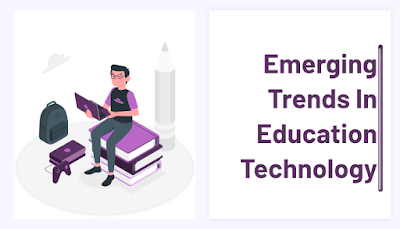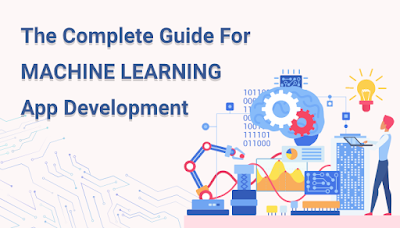Emerging Trends In Education Technology
Ground-breaking technological innovations like LMS (learning management system), digital classes, and many more are becoming an essential part of our education system. Thus, previously what was considered as the future of education is now becoming the norm for everyone. Indeed, technology has influenced almost every industry like healthcare, recruitment, and many more, especially the education industry.
In this digital era, students want to boost and enhance their skills, knowledge via the modern method of staying connected to the internet at their location of choice, instead of using the traditional method of spending time in the classroom. This technological advancement can revolutionize the way of interaction among teachers, students, and parents.
EdTech has the opportunity to improve learning outcomes for millions of adults and kids across the globe. Do you want to identify what is coming next and what are the emerging trends of EdTech for 2021? If so, this post explains all these questions. Now, let's take a look at the leading trends driving and continuing to drive the education sector in the future.
EdTech Market Scenario
According to the research by GlobeNewswire, in 2019, the global education technology market size was valued at USD 74.64 billion and is estimated to witness a CAGR (compound annual growth rate) of 19.9% by the year 2027, which was valued at USD 318.8 billion.
8 Trends That Will Transform The EdTech Industry
Virtual and Augmented Reality
Artificial intelligence (AI) has disrupted the education industry by empowering the system via automating learning resources such as LMS, virtual classes, assessments, sessionals, progress tracking, and many more. With students and teachers, parents can also benefit from this innovation via having transparent communication with teachers and tracking their children's progress.
Virtual reality and augmented reality allow teachers to capture students' attention and enable them to teach more engagingly and productively, simplifying the concept explanation process. AR and VR makes the teaching-learning process more interactive, addictive, and immersive.
Using Augmented Reality, students can see chemical elements, the human body, 3D depictions, and many more. Through products like Adobe Aero, it has become very easy for anyone to build AR objects. On the other hand, VR allows students with disabilities to see things that they can't physically access, and autistic kids can rehearse scenarios that they're likely to encounter in the outside world.
Digital Classrooms
Digital classroom-enabled online lectures. These lectures are gaining immense popularity, because they empower students to learn and choose the educational institution of their choice from any part of the world. It creates a real classroom environment, and authorizes teachers to control and manage academic operations from the comfort of their homes.
Artificial Intelligence
AI plays an important role in the EdTech industry by allowing student monitoring, attendance tracking, and examination proctoring to make virtual learning transparent for everyone. People have prophesied that through 2021, AI could become the main trend and grow more than ever. This is because AI can automate basic activities in education, like grading, tracking progress, examination process, and many more. This is why the AI trend is booming in one of the world's largest US markets for EdTech. For example, it is now possible for teachers to automate grading of the multiple-choice and fill-in-the-blank questions.
Furthermore, both students and teachers can leverage benefits from Artificial intelligence (AI). In addition, students could take help from AI tutors when teachers are too busy to take care of everyone. Also, AI-driven programs can give both teachers and students helpful feedback. This is why some educational institutions use Artificial Intelligence (AI) systems to track students' progress and alert teachers if there is an issue with students' performances.
Gamification
Implementing gamification in the education industry is not new. Teachers have offered students prizes for reading books, achieving good grades, being a good pupil, and other curricular activities for eons. But in the digital era, many educational tools are transforming into simple games. The best example of this is Minecraft. This sandbox-style game has been used to write stories, teach students about DNA, and create stage performances.
Roblox is a gaming platform that is now even bigger than Minecraft, with over 100 million monthly players. This gaming platform is used across the globe to teach programming and game design. Therefore, integrating gamification in education is a developing approach for increasing learners' motivation and engagement by including game design elements in educational environments to make learning fun and addictive.
Personalized and Adaptive Learning
Personalized learning is the key to a 21st-century education. E-Learning platforms offer a flexible learning environment by empowering students to learn at their own pace and also help educators to make learning more collaborative and engaging by leveraging digital tools.
Adaptive Learning uses artificial intelligence algorithms that adjust the educational content according to the student's learning style and pace. Combining Adaptive Learning with EdTech applications and predictive analytics is the best suitable method for both the educator and learner to transform the learning experience. Adaptive learning provides study resources and materials based on students' capability and knowledge level and ensures that students are engaged in learning to bring out desired outcomes.
Robotic Process Automation
The educational industries are shifting towards RPA (robotic process automation), which is helpful for administrators, students, and staff for their several educational activities. RPA can drastically reduce human dependency and increase productivity with reduced time. Robotic Process Automation makes it easy for users to execute repetitive tasks and tedious heavy paperwork with zero error rate.
Through RPA, you can automate several tasks like course registration, enrollment process, administrative tasks, attendance management, chatbots, finance, and many more at your educational institution. RPA tools can efficiently do around 70% of these tasks. In addition, implementing RPA will provide improved customer experience, better management capabilities, increased compliance, cost savings, and even no coding is required, which make the entire work flexible and accessible.
Cloud-Based EdTech Platforms
Implementation of cloud technology in education is very beneficial. Educators can effortlessly impart virtual classes and join their students in online projects, hackathons, and various programs. Cloud technology is the most widely used technology because of its flexible storage, robust security measures, usage mechanisms, and ease of use.
Cloud Computing has given us the benefit of the decentralized sharing method that requires minimal human effort. Due to this pandemic, education needs to be driven by the latest technology that the twenty-first century demands. Incorporating digitization into the E-learning process mainly revolves around bringing education out from the classroom (traditional learning method) and delivering it to our workplace. The advancement of technology in education has come up to a new horizon, making remote education and higher education more comfortable and easily accessible.
Blockchain Technology
Nowadays, Blockchain is becoming very popular. The reason behind the popularity is that it transforms the record-keeping of certificates and students' credentials in learning institutions. Blockchain is a distributed ledger that makes other cryptos and Bitcoin and works. Undoubtedly, the most applicable technology in cryptocurrency. Moreover, given blockchain technology's safety and integrity, it is the main reason to use this to enter the education industry.
Nowadays, there are ample benefits to using blockchain technology in the EdTech industry. Let's take a look at those benefits.
It creates better and secure learning platforms
Helps in the verification of students' details
Provides decentralizing online learning
Reduce the fraudulent activities in education
Protects from copyright and digital rights violation
Conclusion
So, these were the eight emerging trends in Education Technology you should keep an eye on in 2021. If you plan to launch your own learning app, you can integrate these above-mentioned pertinent technologies. Also, if you think you need support in validating your idea, you can approach a professional education app development company and get your concept verified and app development completed to the highest global standards.




Comments
Post a Comment